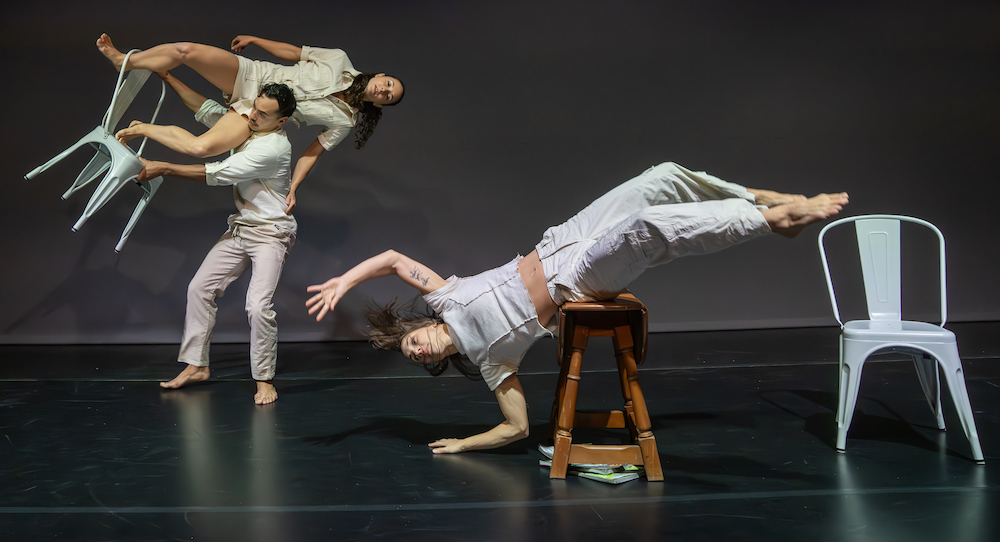The 92nd Street Y, New York, NY.
October 18, 2024.
Dual Rivet, the contemporary company directed by Chelsea Ainsworth and Jessica Smith, performed a two-night run of its evening length work, Subscript, at 92nd Street Y in NYC. This work further develops the company’s previous short film, In Capsule, and both explore reality and perception. Dual Rivet’s style is a blend of contemporary dance, heavily influenced by acro-style, gender non-confirming partnering and fluid floorwork. Beyond that, physical expression often lies a distinctive reckoning of by-gone days when women dressed for dinner each night in heels and listened to records on the player. In this and other works by the company, this vision of perfection holds…until one thread starts to unravel the neatly coifed world they create.
The show opens to a curiously ominous tone with the action occurring on a ledge behind the audience. Under bright lights, a man dressed all in white, wearing a Revolutionary-era style jacket, shuffled through a sack of documents with great intensity until the lights dimmed. The audience untwisted themselves and sat facing the stage with four chairs and one end table that had been placed there as everyone’s attention was misdirected. The remaining three dancers arrived with an uncomfortable pensiveness.
The all-white-clad quartet used the chairs and table to create different vignettes and relationships with one another. Often manipulating one another’s arms and legs to create the shapes that then morphed into the effortless partnering paramount to Dual Rivet’s identity, the results revealed intellectual movement intention. The complexity of the work requires specific precision to enable its seamless quality.
Halfway through the show, the chairs disappear and the grey structures behind spin around to reveal two rooms: one fully yellow, one fully blue, and inside of each were company co-directors Ainsworth and Smith, dressed in accordance with the color of the room they inhabited. Inside these rooms, the dancers took to everyday tasks of women in the ’50s, executed in the classic heels of the time – until the perfect facade begins to crumble and the willingness toward expectations no longer seem worthy of pursuing.
We come to understand that these people reject the lives they perviously subscribed to, or at least see clearly the walls they built for themselves – as the dancers stand motionless onstage for what seemed like decades, a powerful reminder that stillness helps us see more clearly.
By Emily Sarkissian of Dance Informa.















